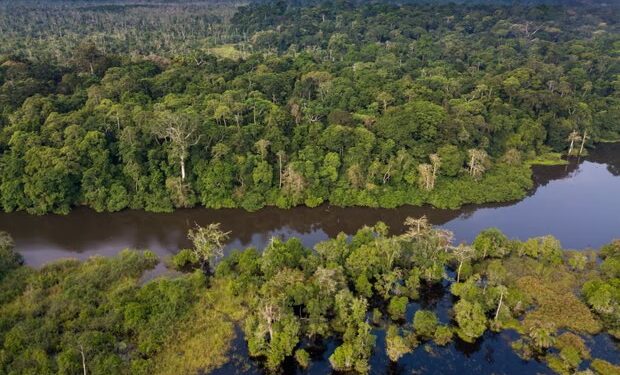The Congo basin, the vast and often overlooked rainforest spanning central Africa, stands as the second-largest tropical forest on Earth. Despite its extraordinary ecological value and its role in stabilising the global climate, it remains far less recognised than the Amazon – and far more vulnerable to silent decline.
A global ecological powerhouse
Covering more than three million square kilometres across the Democratic Republic of the Congo, Republic of the Congo, Gabon, Cameroon, the Central African Republic and Equatorial Guinea, the Congo basin forms one of the planet’s last truly intact tropical wildernesses.
Its dense forests store hundreds of billions of tonnes of carbon, regulate regional rainfall and serve as a vital buffer against global warming. The ecosystem supports an astonishing range of biodiversity, from forest elephants and mountain gorillas to rare primates, birds and countless endemic species found nowhere else on Earth.
Scientists increasingly describe the basin as a global climate stabiliser: if it weakens, the entire climate system becomes more fragile.
Human pressures intensify quietly
Unlike the Amazon, the Congo basin’s threats unfold with less international attention. Deforestation is driven primarily by small-scale agriculture, charcoal production and population growth rather than industrial farming.
Yet the cumulative impact is significant. Forest loss continues to rise as communities depend on wood fuel for daily survival, roads extend deeper into remote areas and political instability limits effective conservation enforcement. Illegal mining, logging and land clearing occur in places where state presence is minimal.
The danger lies not only in the speed of destruction but in its invisibility: degradation is dispersed, often unrecorded and overshadowed by crises elsewhere.
Critical carbon reserves under strain
One of the Congo basin’s most significant features is its vast peatlands, some of which were only mapped in recent years. These peatlands make up one of the world’s largest carbon stores, locking in ancient, waterlogged organic matter accumulated over millennia.
If disturbed or drained, these areas could release enormous quantities of carbon into the atmosphere – emissions comparable to those of major industrialised nations. Protecting these peatlands has therefore become a priority for climate scientists, who warn that their destabilisation would represent a major global setback.
Opportunities for conservation and sustainable growth
Despite mounting challenges, the region offers substantial opportunities for conservation leadership. Several Congo basin countries have advanced ambitious forest-protection strategies, expanded national parks and entered international financing partnerships aimed at preserving biodiversity while supporting local development.
Sustainable forestry initiatives, carbon-credit agreements and community-based conservation programmes are slowly gaining traction. However, long-term success depends on stable governance, increased international support and alternatives to destructive land-use practices for communities that rely heavily on forest resources.
A turning point for a critical ecosystem
The Congo basin now stands at a crossroads. If protected and sustainably managed, it can remain one of Earth’s most powerful natural defences against climate change. If neglected, gradual degradation could accelerate, pushing the ecosystem closer to irreversible tipping points.
For global policymakers, scientists and conservationists, the message is increasingly clear: safeguarding the Congo basin is not only a regional issue but a global imperative. Its resilience will help determine the stability of the world’s climate – and the future of millions who depend on its forests for survival.
Newshub Editorial in Africa – 20 November 2025



Recent Comments